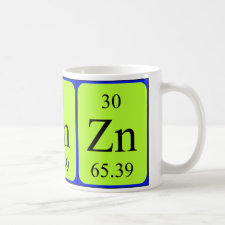
Authors: Metzger TS, Tel-Vered R, Willner I
Article Title: Controlled Vectorial Electron Transfer and Photoelectrochemical Applications of Layered Relay/Photosensitizer-Imprinted Au Nanoparticle Architectures on Electrodes.
Publication date: 2016
Journal: Small
Volume: 12
Issue: (12)
Page numbers: 1605-1614.
DOI: 10.1002/smll.201503077
Abstract: Two configurations of molecularly imprinted bis-aniline-bridged Au nanoparticles (NPs) for the specific binding of the electron acceptor N,N'-dimethyl-4,4'-bipyridinium (MV2+) and for the photosensitizer Zn(II)-protoporphyrin IX (Zn(II)-PP-IX) are assembled on electrodes, and the photoelectrochemical features of the two configurations are discussed. Configuration I includes the MV2+-imprinted Au NPs matrix as a base layer, on which the Zn(II)-PP-IX-imprinted Au NPs layer is deposited, while configuration II consists of a bilayer corresponding to the reversed imprinting order. Irradiation of the two electrodes in the presence of a benzoquinone/benzohydroquinone redox probe yields photocurrents of unique features: (i) Whereas configuration I yields an anodic photocurrent, the photocurrent generated by configuration II is cathodic. (ii) The photocurrents obtained upon irradiation of the imprinted electrodes are substantially higher as compared to the nonimprinted surfaces. The high photocurrents generated by the imprinted Au NPs-modified electrodes are attributed to the effective loading of the imprinted matrices with the MV2+ and Zn(II)-PP-IX units and to the effective charge separation proceeding in the systems. The directional anodic/cathodic photocurrents are rationalized in terms of vectorial electron transfer processes dictated by the imprinting order and by the redox potentials of the photosensitizer/electron acceptor units associated with the imprinted sites in the two configurations
Template and target information: N,N'-dimethyl-4,4'-bipyridinium, MV2+, Zn(II)-protoporphyrin IX, Zn(II)-PP-IX
Author keywords: electropolymerization, molecular imprinting, nanotechnology, photocurrent, porphyrin



Join the Society for Molecular Imprinting

New items RSS feed
Sign-up for e-mail updates:
Choose between receiving an occasional newsletter or more frequent e-mail alerts.
Click here to go to the sign-up page.
Is your name elemental or peptidic? Enter your name and find out by clicking either of the buttons below!
Other products you may like:
 MIPdatabase
MIPdatabase









